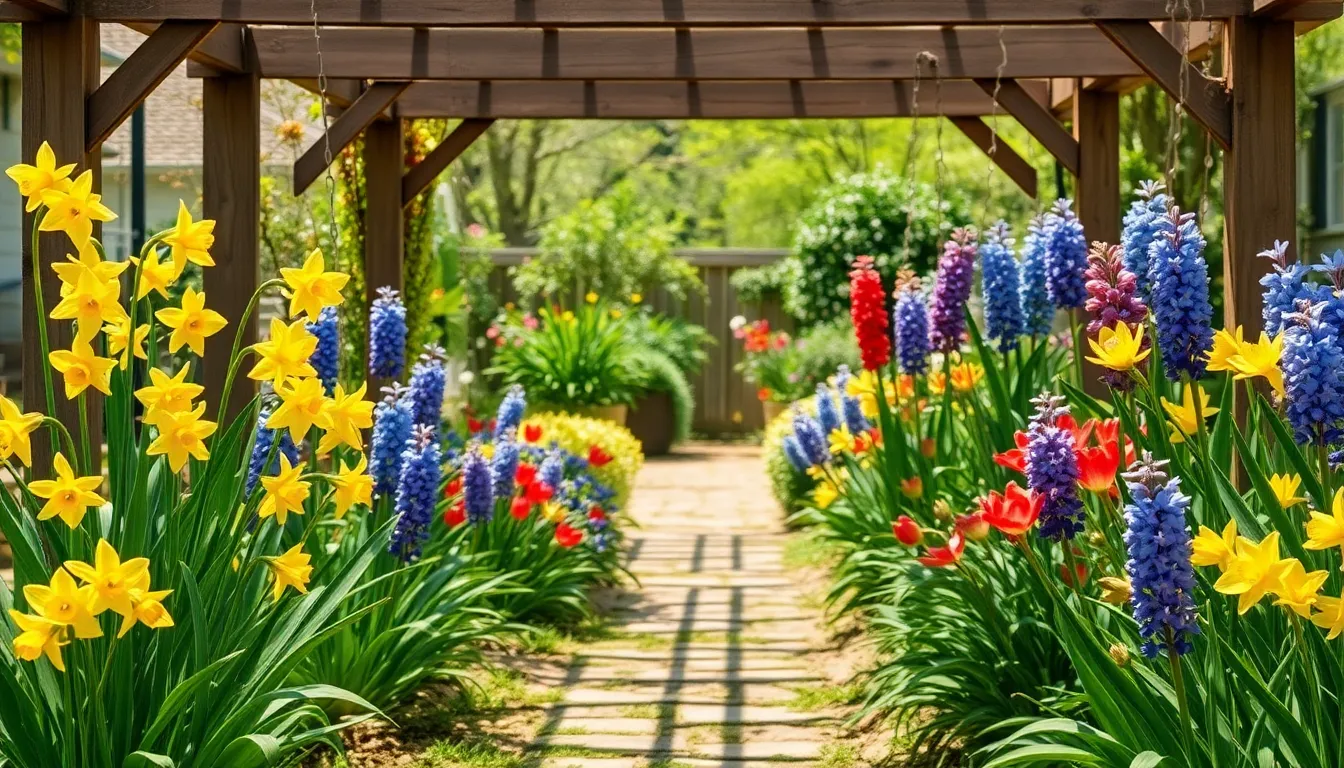Spring is a season of renewal and vibrant possibilities, offering gardeners the perfect backdrop to cultivate a feast of colors and fragrances. Whether you’re just beginning your gardening journey or are a seasoned green thumb, planting the right flowers in spring can transform your garden into a breathtaking oasis. This delightful endeavor not only enhances the beauty of your outdoor space but also nurtures your soul with the simple joy of watching life bloom anew.
In this article, we will explore 12 stunning flowers that are perfect for spring planting, each bringing its unique charm and allure to your garden. From bold, eye-catching blossoms to delicate, understated blooms, you’ll discover a variety of options that cater to different aesthetics and growing conditions. You’ll learn about the specific needs of each flower, ensuring you can confidently cultivate a thriving garden that reflects both your personality and the spirit of spring.
Whether you’re dreaming of a garden filled with the classic elegance of tulips or the whimsical beauty of poppies, this guide will equip you with the knowledge to make informed choices. Embrace the excitement of spring as we guide you through the rewarding process of selecting and planting flowers that will flourish under your care. Get ready to dig your hands into the earth, nurture your creativity, and watch your garden come to life with the season’s most spectacular floral displays.
Choosing Springtime Bloomers
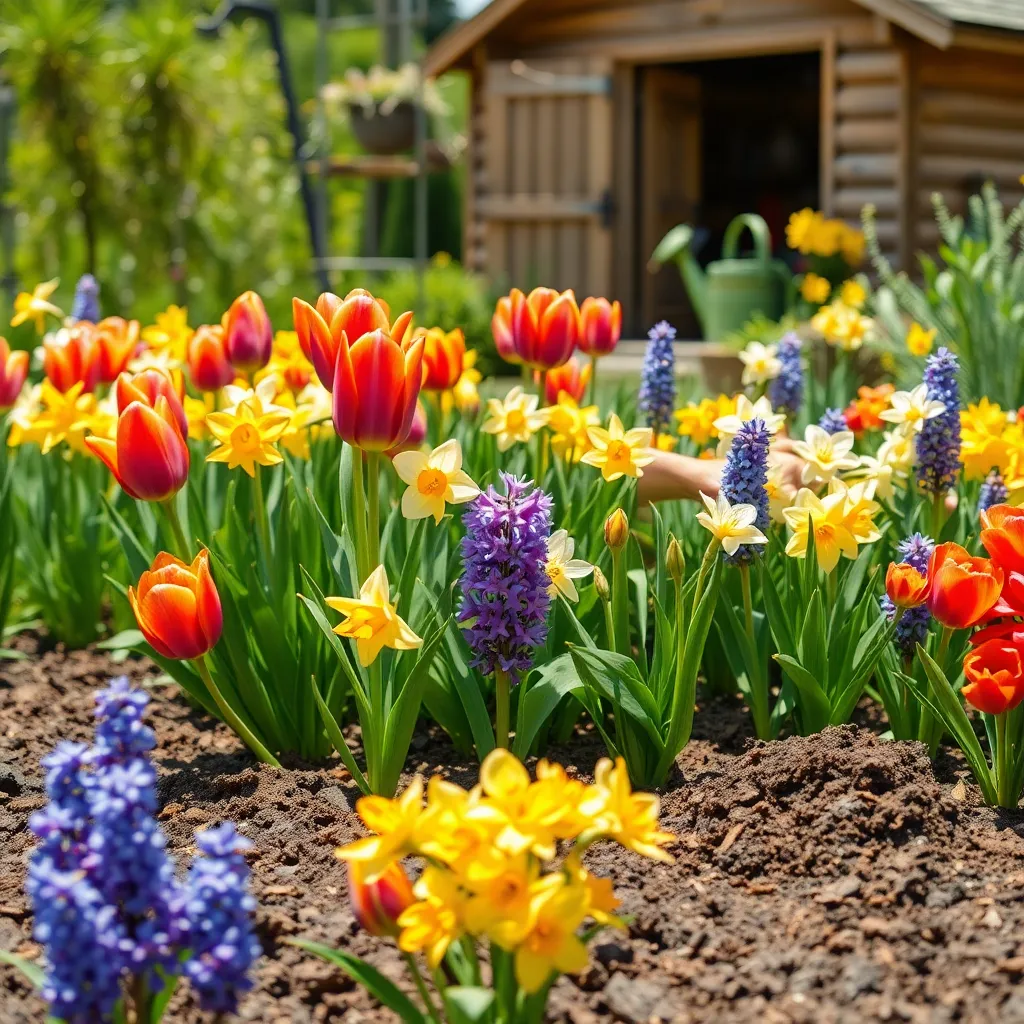
Spring is the perfect time to revitalize your garden with vibrant blooms that herald the season’s arrival. When selecting flowers, consider those that thrive in your local climate, ensuring a successful and colorful display.
Start by choosing plants that are known for their resilience and beauty, such as daffodils and tulips, which are staples of the season. These flowers prefer well-draining soil and should be planted in areas that receive full sun to achieve their best growth.
For a more diverse garden, include a mix of annuals and perennials to ensure continuous blooming throughout the spring. Annuals like pansies and marigolds offer bright colors and can easily fill gaps, while perennials like peonies will return year after year with proper care.
Ensure your garden has a good balance of colors and heights by mixing taller plants like foxgloves with shorter groundcovers like alyssum. This not only adds visual interest but also helps create a more natural look.
Watering is crucial during the establishment phase, so ensure new plants receive consistent moisture without becoming waterlogged. Use a layer of mulch around the base of the plants to retain moisture and suppress weeds, which can compete for resources.
Advanced gardeners might experiment with companion planting, pairing flowers that attract beneficial insects with those that need pest protection. For instance, planting marigolds near vegetables can help deter nematodes and other pests naturally.
Dazzling Daisies for Your Garden
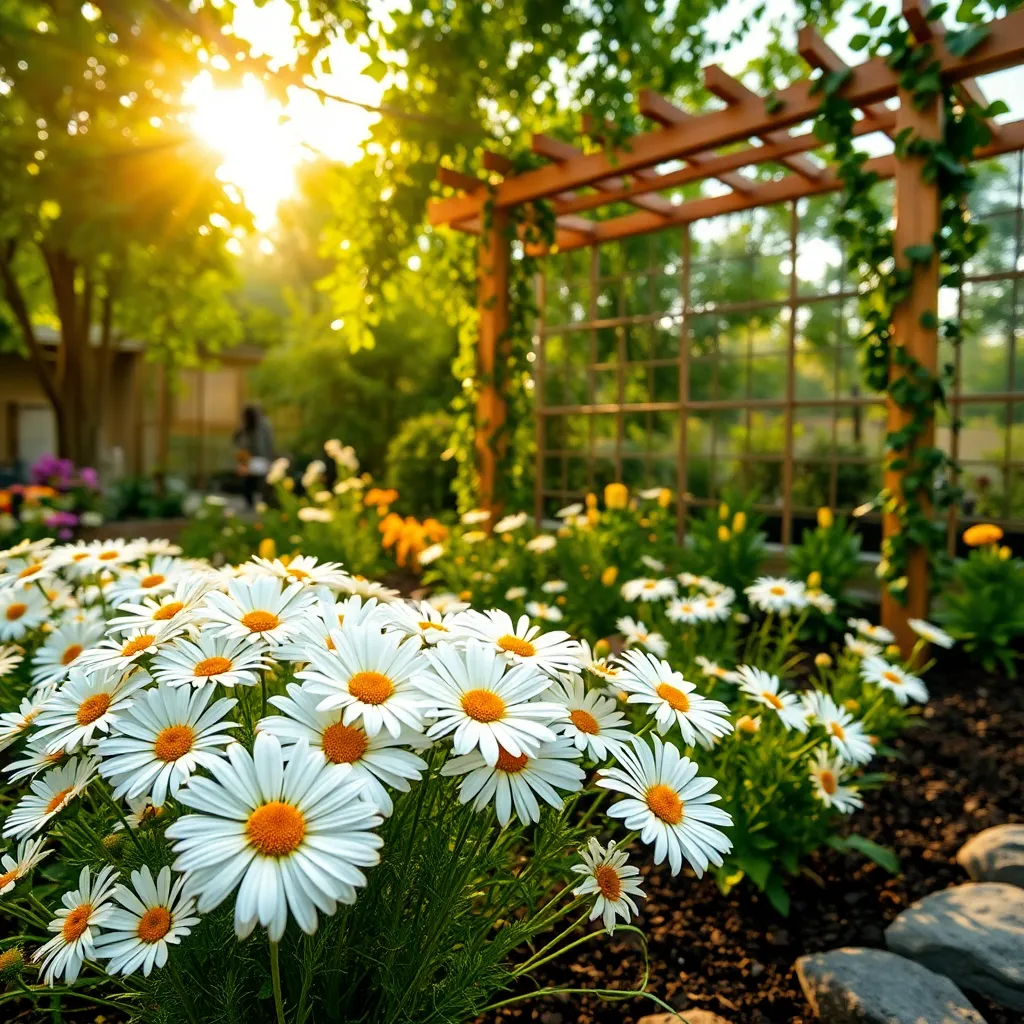
Daisies are a delightful addition to any spring garden, offering a cheerful and hardy bloom. For beginners, they are a perfect choice due to their low-maintenance nature and adaptability to various climates.
To start, choose a sunny spot in your garden where the daisies will receive at least six hours of sunlight daily. It’s essential to plant them in well-draining soil, as daisies do not thrive in overly wet conditions.
When planting daisies, aim for a spacing of about 12 to 15 inches apart to give each plant room to grow and spread. Regular watering is crucial; however, ensure the soil has dried out between waterings to prevent root rot.
For those with more experience, consider deadheading spent blooms to encourage a longer flowering period. Additionally, adding a layer of mulch can help retain moisture and reduce weed growth around your daisies.
As a tip for advanced gardeners, daisies can benefit from a balanced, slow-release fertilizer applied in early spring. This will provide the nutrients needed for robust growth and vibrant blooms throughout the season.
Captivating Tulips and Their Varieties
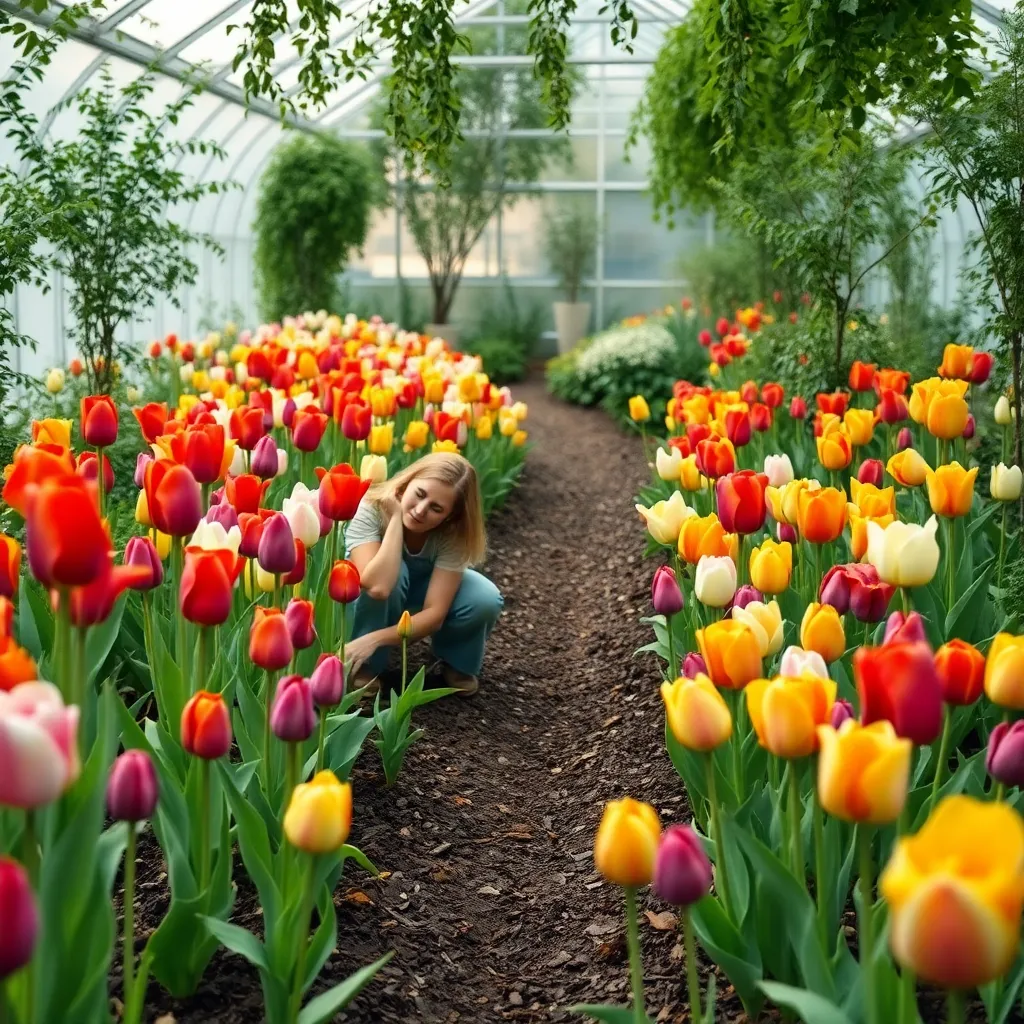
Tulips are a classic springtime favorite, offering a burst of color after the winter months. These bulbs thrive in well-drained soil with a pH between 6.0 and 7.0, making it essential to test your soil before planting.
Planting tulip bulbs in the fall, about six to eight weeks before the first hard frost, ensures they have the chilling period needed for proper growth. Space the bulbs 4 to 6 inches apart and plant them at a depth of 6 to 8 inches for optimal results.
Watering tulips requires a balance; they need enough moisture to establish roots but dislike soggy conditions. A good rule of thumb is to provide about 1 inch of water per week during their growing season, being careful not to overwater.
For those looking to diversify their tulip garden, consider varieties like the vibrant ‘Red Emperor’ or the elegant ‘Queen of Night.’ Advanced gardeners might experiment with layering different tulip varieties in the same bed to achieve a staggered blooming effect.
Elegant Lilies for Spring Appeal
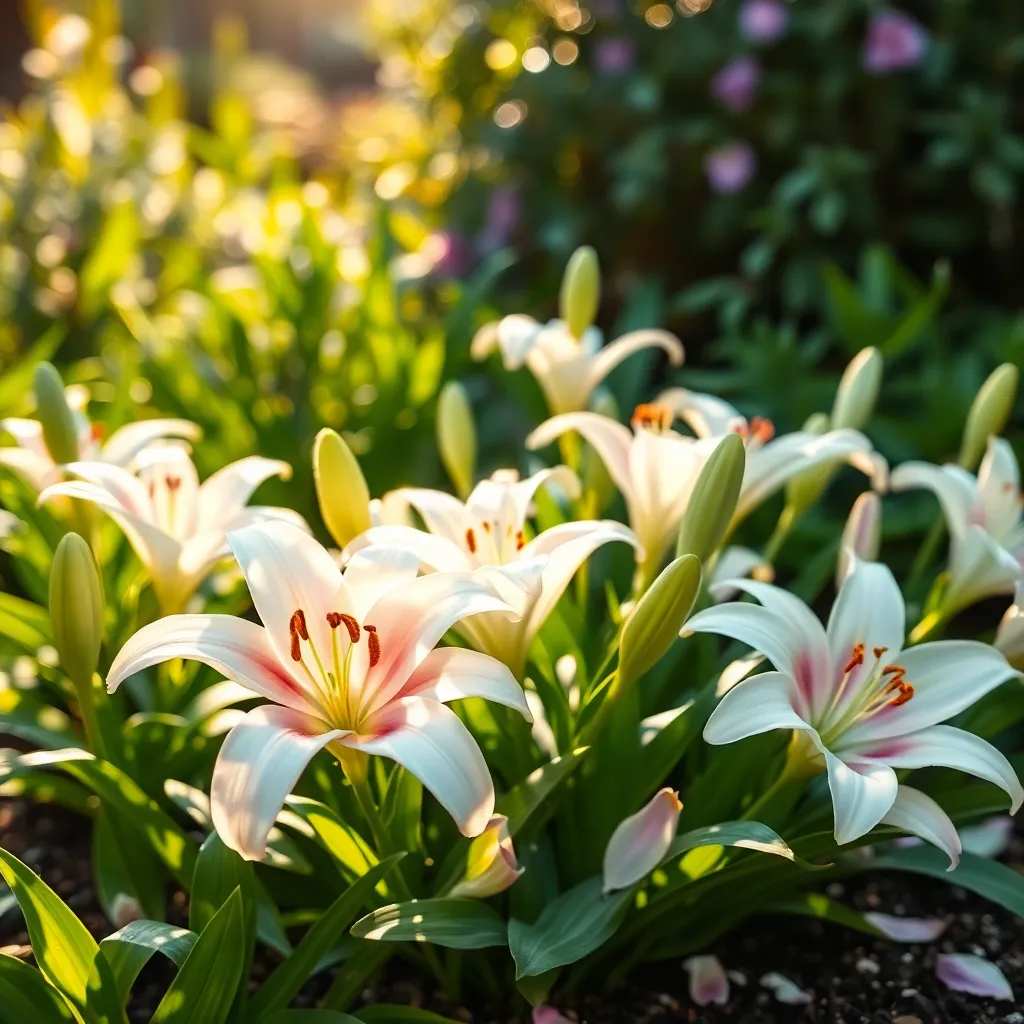
Incorporating lilies into your spring garden can transform it into a haven of elegance and fragrance. These stunning flowers thrive in well-draining soil, rich in organic matter; adding aged compost can significantly enhance their growth.
When planting lilies, ensure they receive at least six hours of sunlight daily, as this encourages optimal blooming. Water lilies moderately, allowing the soil to dry slightly between waterings to prevent bulb rot.
For beginners, planting bulbs about 4 to 6 inches deep in early spring is a good practice, while advanced gardeners might consider staggering plantings for prolonged blooming periods. Mulching around the plants helps retain moisture and suppress weeds, contributing to healthier growth.
Choose from a variety of lily types, such as Asiatic or Oriental, depending on your garden’s aesthetics and climate. For those in warmer regions, selecting heat-tolerant varieties will ensure your lilies thrive throughout the season.
Vibrant Poppies: A Colorful Choice
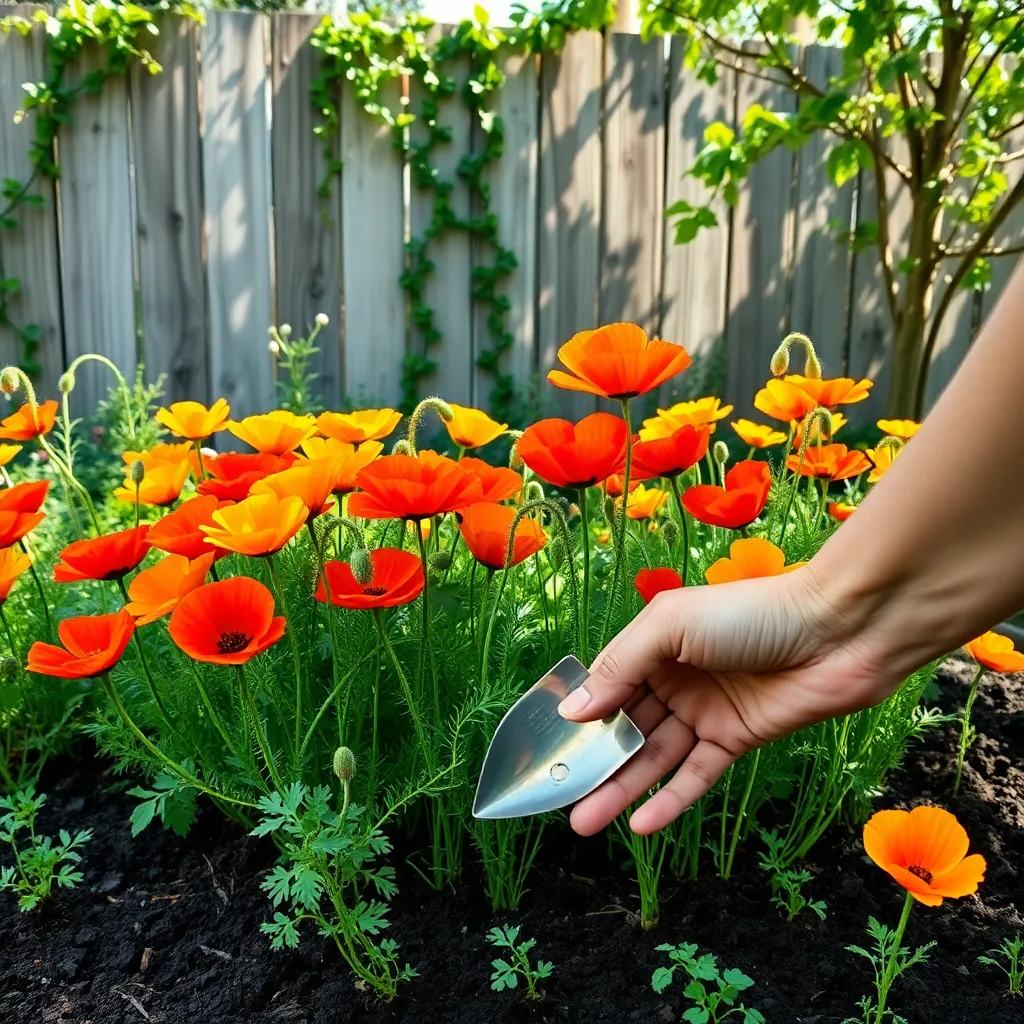
Poppies are a stunning addition to any spring garden, offering a burst of color that can brighten up any space. These resilient flowers thrive in full sunlight and require well-drained soil to flourish, making them a wonderful choice for gardeners looking for low-maintenance beauty.
When planting poppies, it’s best to start them from seeds in early spring, directly sowing them into the soil. You should lightly cover the seeds with soil, as they require sunlight to germinate and typically sprout within two weeks.
Watering poppies is straightforward, as they prefer a more arid environment once established. Ensure the soil is dry between waterings to prevent root rot, and consider using mulch to retain moisture while suppressing weeds.
For those looking to cultivate poppies with vibrant blooms, consider deadheading spent flowers to encourage more blossoms. Advanced gardeners might experiment with different poppy varieties, like the Iceland or Oriental poppies, each offering unique colors and petal textures.
Charming Peonies for Fragrance
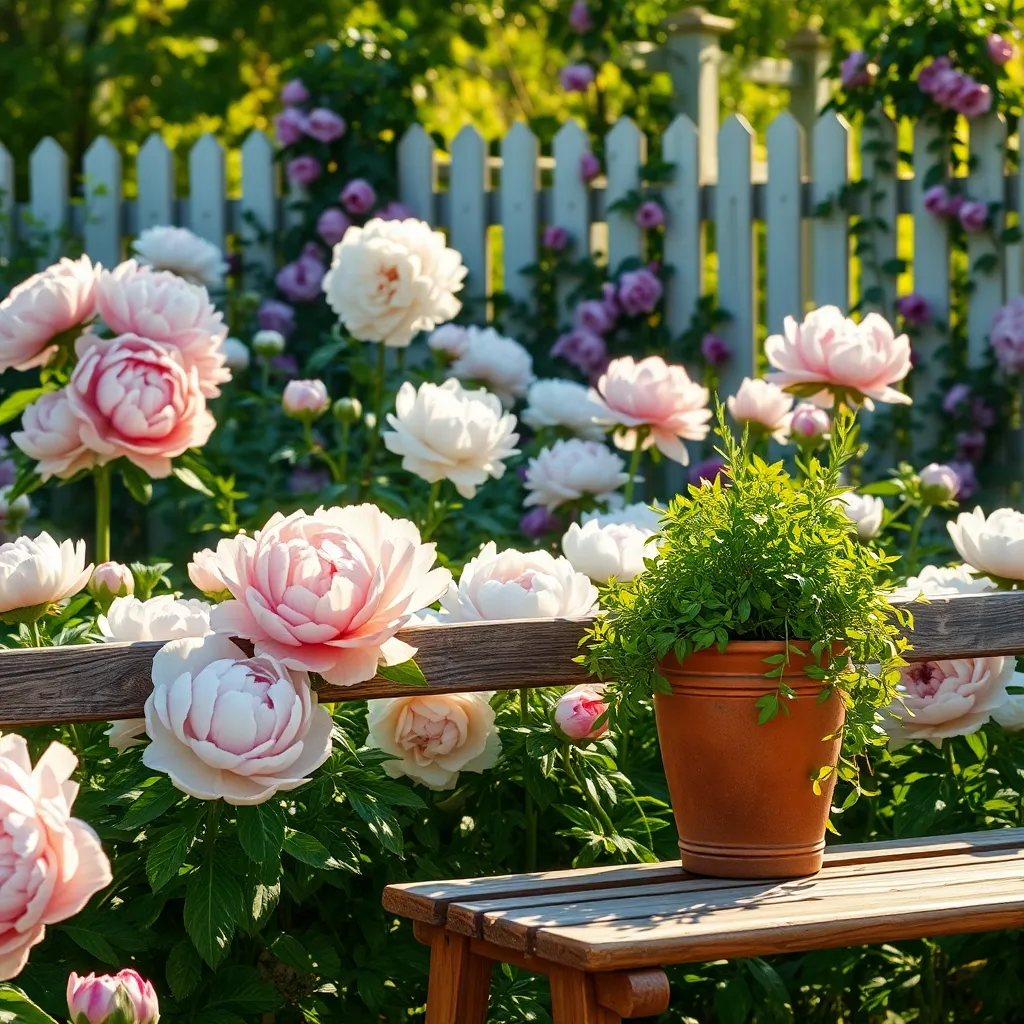
Peonies are beloved for their lush blooms and delightful fragrance, making them a charming addition to any garden. To plant peonies successfully, choose a location with full sun and well-drained soil to encourage robust growth and blooming.
It’s essential to plant peony roots shallowly, with the eyes no more than two inches below the soil surface. This planting depth helps prevent the roots from being buried too deep, which can hinder blooming and growth.
Water peonies regularly, especially during dry spells, but avoid waterlogging the soil. A layer of organic mulch can help retain moisture and keep weeds at bay, promoting a healthier environment for your peonies.
Fertilize peonies in early spring with a balanced, slow-release fertilizer to support vigorous growth, but do so sparingly to avoid excessive leaf growth at the expense of flowers. For experienced gardeners, consider staking taller varieties to prevent wind damage and ensure the blooms stand upright.
Radiant Sunflowers for Bright Spaces

Sunflowers are a vibrant addition to any garden, bringing a touch of brightness to your outdoor spaces. To start, it’s crucial to plant them in a location that receives at least six to eight hours of sunlight daily.
Consider planting sunflower seeds directly into the soil after the last frost has passed. Make sure to space the seeds about six inches apart to allow for ample growth and air circulation.
Choose well-draining soil with a pH between 6.0 and 7.5 for optimal growth. If your soil is heavy or clay-like, consider adding compost or sand to improve drainage.
Water sunflowers deeply but infrequently, aiming for about one inch of water per week. Mulching around the base of each plant can help retain moisture and suppress weeds.
For those looking to grow sunflowers as a striking backdrop or border, consider taller varieties like ‘Russian Mammoth.’ Advanced gardeners can try staking these taller plants for added support against wind.
Classic Roses: Timeless Beauty
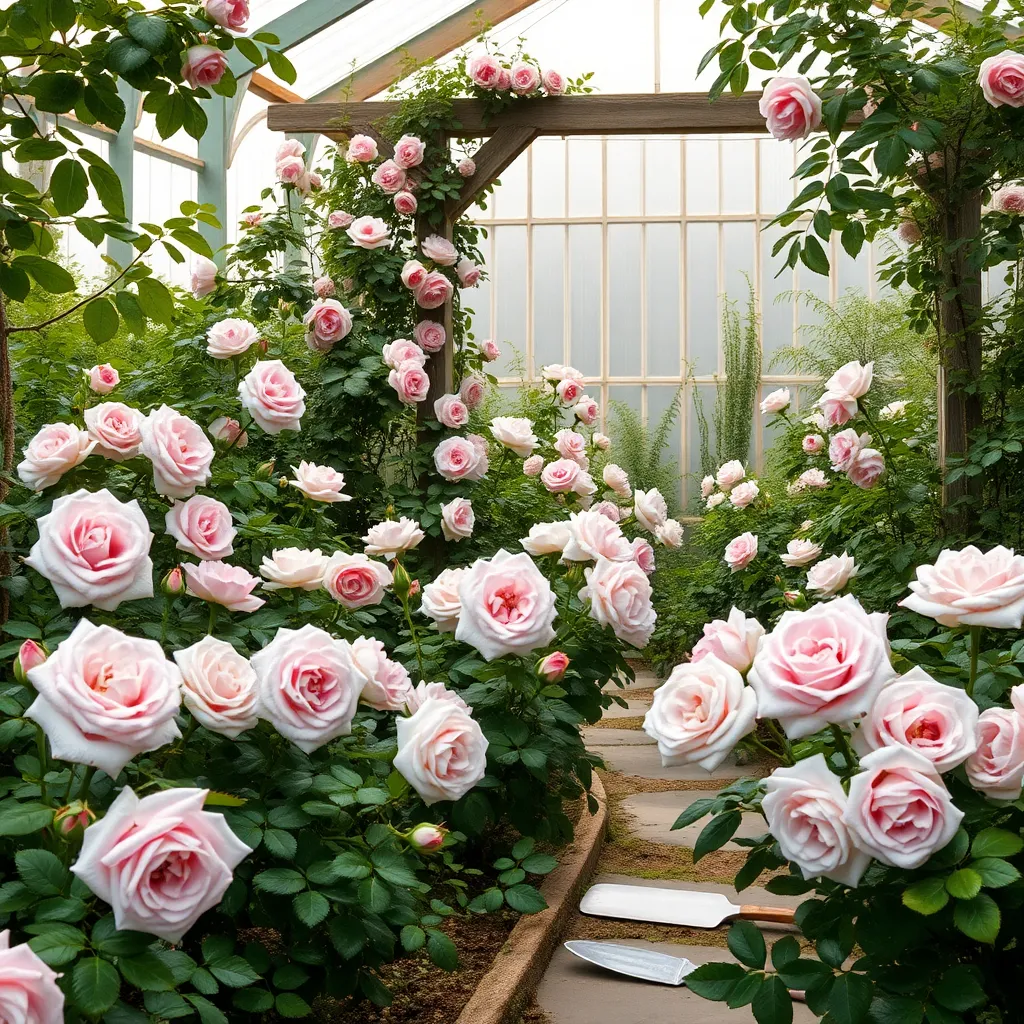
Classic roses are a stunning addition to any garden, offering both beauty and fragrance. To ensure success, plant them in a location that receives at least six hours of sunlight daily, as roses thrive in sunny spots.
When it comes to soil, roses prefer well-drained, loamy soil enriched with organic matter. Mix compost or aged manure into the planting area to provide the nutrients roses need for optimal growth.
Watering is crucial, especially during the growing season. Ensure that roses receive about one inch of water per week, either through rainfall or supplemental irrigation, focusing on the base of the plant to prevent fungal diseases.
For those looking to enhance their rose-growing skills, consider pruning in early spring to encourage new growth and improve air circulation. Use clean, sharp tools to make cuts at a 45-degree angle just above a leaf node, which helps direct growth outward and upward.
Exotic Orchids for a Unique Touch
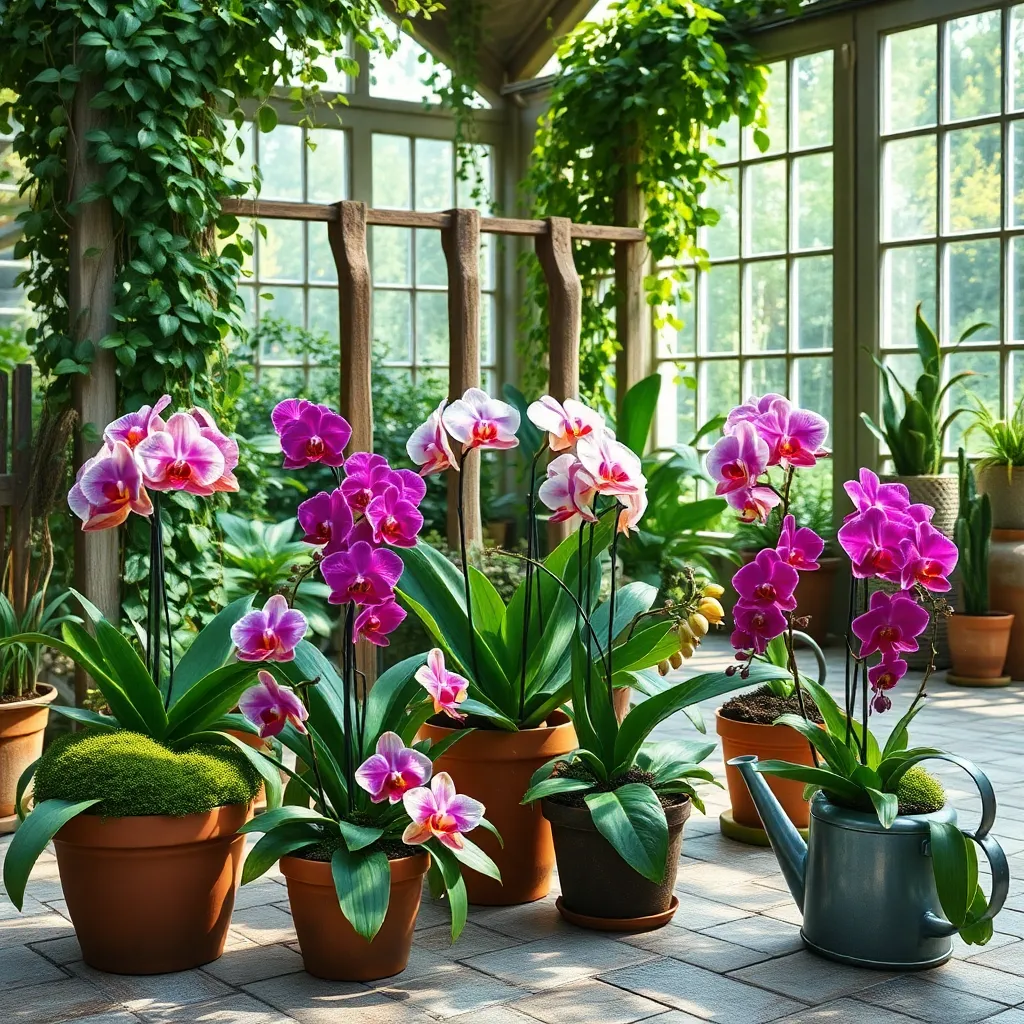
Orchids can add an exotic flair to your garden with their unique forms and stunning colors. For successful growth, these plants thrive in a well-draining potting mix, often a specialty orchid mix, which is crucial for their delicate root systems.
Watering is vital, but it’s important not to overdo it; orchids prefer to dry out slightly between waterings. Consider using a spray bottle to mist the leaves, which mimics their natural rainforest habitat and helps maintain humidity levels.
Position your orchids in a spot where they receive bright, indirect sunlight, as direct sunlight can scorch their leaves. A window with filtered light or a shaded patio area is ideal for keeping them healthy and vibrant.
For gardeners looking to expand their skills, try experimenting with different orchid varieties such as Phalaenopsis or Cattleya, which offer a range of colors and sizes. Regularly check your orchids for pests, and use a diluted neem oil solution as a natural remedy to keep them pest-free.
Delightful Daffodils to Brighten Beds
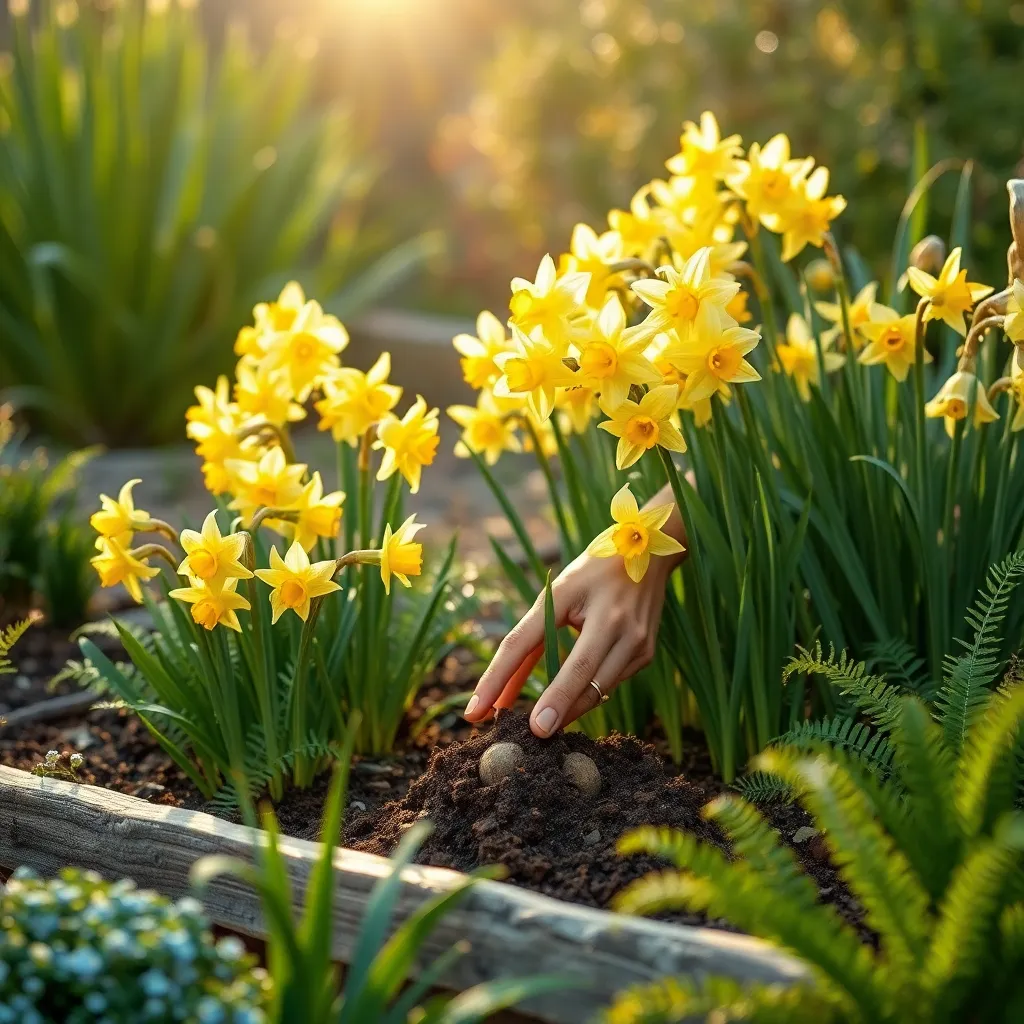
Daffodils, with their cheerful blossoms, are a springtime favorite that can transform any garden into a vibrant haven. To ensure a successful bloom, plant daffodil bulbs in the fall, about 2 to 4 weeks before the ground freezes, allowing them to establish roots before winter.
Choose a well-draining soil enriched with organic matter to provide a nutrient-rich environment for your daffodils. Position the bulbs in a sunny spot, as they thrive best in full sun, which helps produce larger blooms and stronger stems.
Water the newly planted bulbs thoroughly, but be careful not to overwater, as this can cause the bulbs to rot. Once established, daffodils are relatively drought-tolerant, requiring only occasional watering during dry spells.
For a more visually appealing display, plant the bulbs in clusters or drifts rather than single lines. This technique creates a naturalized look and helps ensure a stunning, coordinated burst of color in your garden each spring.
Chic Hydrangeas for Lush Gardens
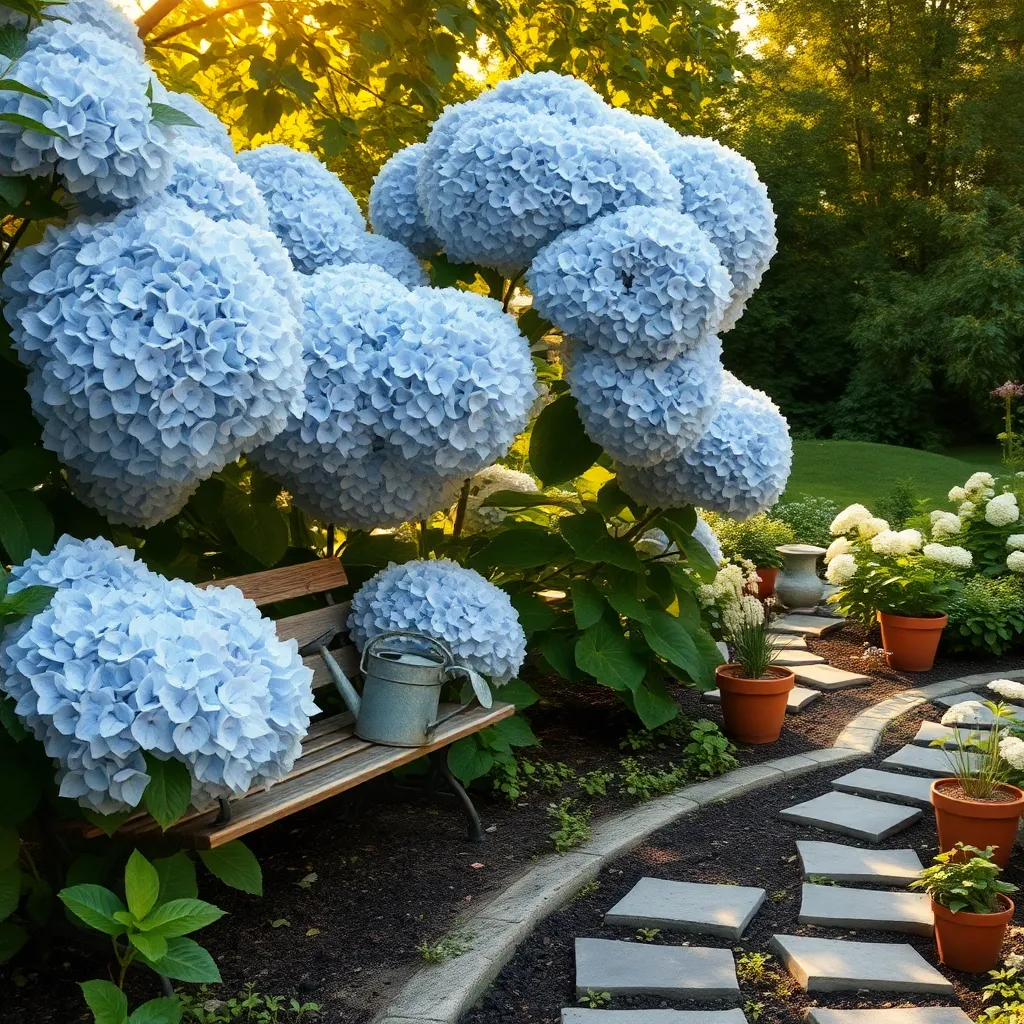
Hydrangeas are a stunning addition to any garden, offering large blooms that can range in color from pink to blue, depending on the soil pH. To achieve the best results, plant hydrangeas in well-draining, nutrient-rich soil and ensure they receive morning sun with afternoon shade.
When planting hydrangeas, it’s crucial to space them adequately, typically about 3 to 10 feet apart, depending on the variety. This spacing ensures each plant has enough room to grow without competition, promoting healthier blooms and foliage.
Watering is another critical aspect of hydrangea care; they thrive with deep, consistent watering, particularly in the heat of summer. A good rule of thumb is to water deeply once a week, increasing frequency during dry spells to keep the soil moist but not waterlogged.
For those looking to experiment, adjusting the soil pH can alter the bloom color—adding lime will raise the pH to produce pinker flowers, while sulfur can lower it for bluer hues. This advanced technique allows gardeners to personalize the aesthetic of their hydrangea blooms, adding a unique touch to their garden.
Care Tips for Springtime Blossoms
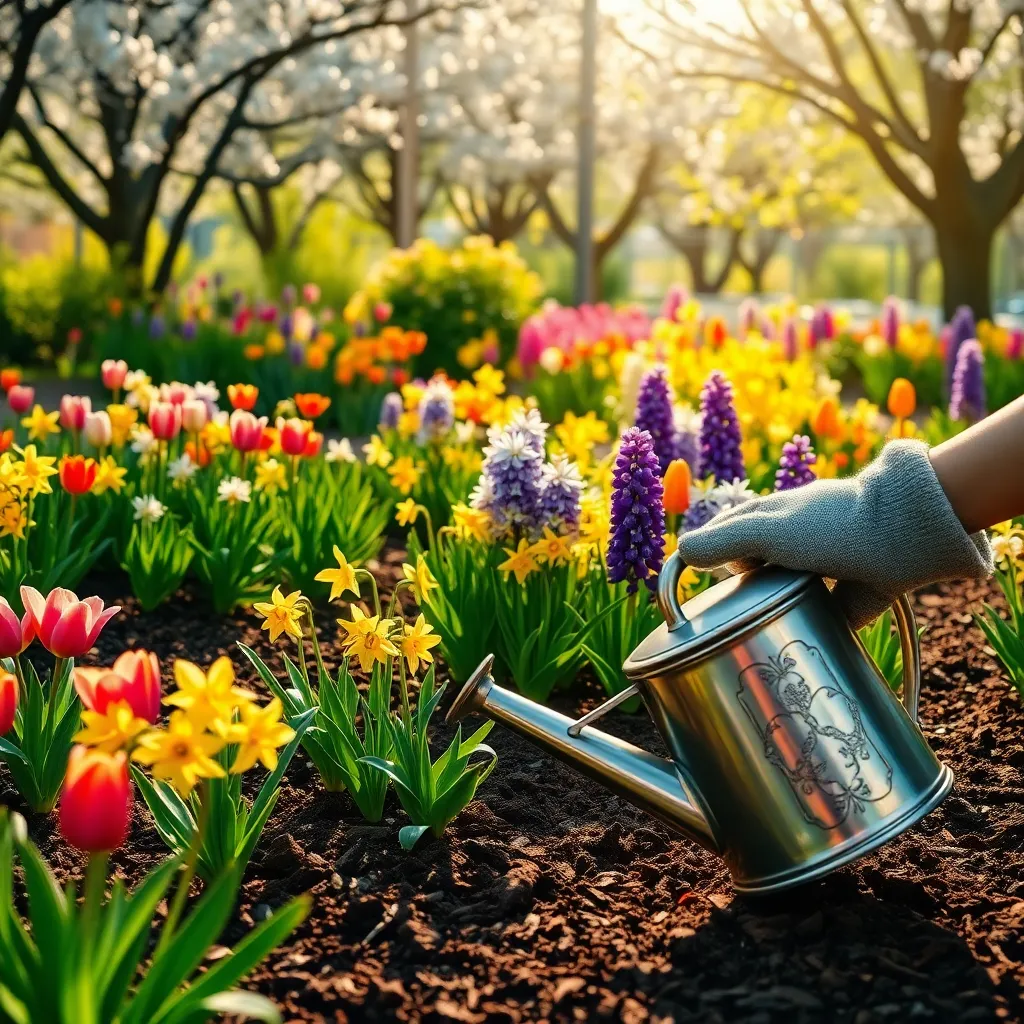
Springtime blossoms offer an enchanting array of colors and fragrances that can transform any garden. To ensure your new plants thrive, start by choosing the right location with adequate sunlight. Most spring flowers, like tulips and daffodils, prefer full sun or partial shade.
Proper soil preparation is crucial for healthy spring blooms. Aim for a well-draining soil rich in organic matter, which you can achieve by adding compost or aged manure. A pH level between 6.0 and 7.0 generally suits most spring flowers.
Watering practices are equally important to maintain vibrant blossoms. During dry spells, water deeply once a week rather than shallow, frequent watering. This promotes deeper root growth, making plants more resilient to drought.
Fertilizing spring blossoms can boost their growth and flowering. Use a balanced, slow-release fertilizer at planting time to provide a steady supply of nutrients. For established plants, a liquid feed every few weeks can encourage more blooms.
Protect your blossoms from pests and diseases by keeping an eye out for common issues like aphids and fungal infections. Implement preventative measures such as removing dead foliage and applying organic insecticides when necessary. Maintaining good air circulation around plants also helps reduce disease risk.
Conclusion: Growing Success with These Plants
In exploring the vibrant garden of relationships, we’ve uncovered 12 key concepts, each symbolized by a beautiful spring flower. From the steadfast loyalty of daffodils to the nurturing care of roses, each blossom offers a lesson in love and connection. Lilies remind us of purity and honesty, while tulips inspire us to embrace change. Sunflowers teach us about positivity, daisies about simplicity, and irises about hope and wisdom. The gentle peony whispers of romance, and the resilient hyacinth encourages forgiveness. Orchids symbolize strength, violets inspire humility, and azaleas highlight the importance of passion.
Now, take a moment to cultivate your own relationship garden. Choose one “flower” to focus on this week—whether it’s fostering honesty, embracing change, or nurturing romance. By intentionally practicing one concept, you can sow seeds of growth and transformation in your relationships.
Remember, successful relationships bloom with ongoing care and dedication. Bookmark this article as your perennial guide to nurturing relationships, revisiting it for inspiration and growth. As you plant these seeds, look forward to a flourishing future filled with love, understanding, and happiness. Your relationship success story begins with the steps you take today—embrace them and watch your garden grow.

